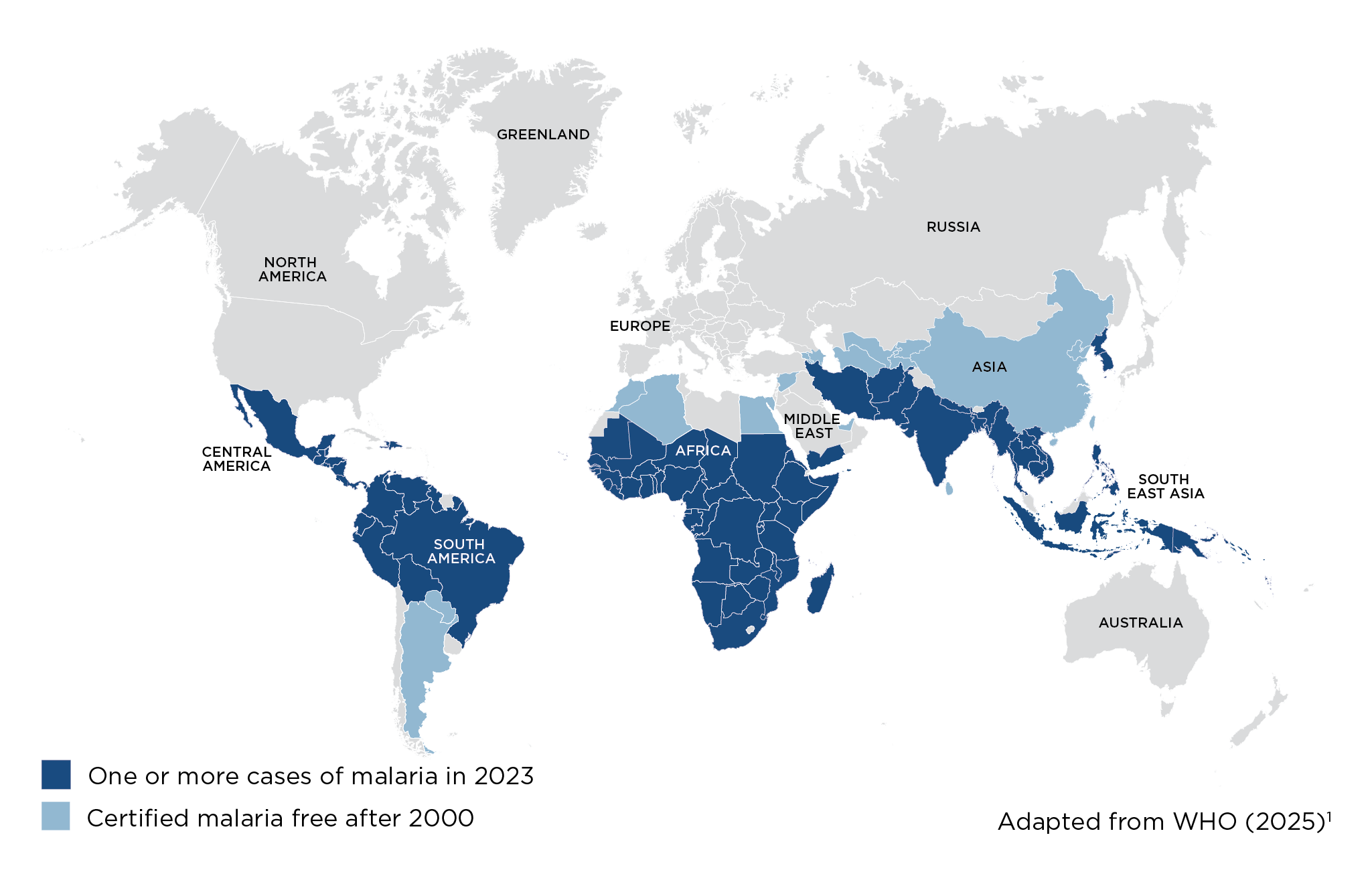In 2023, there were an estimated 263 million cases of malaria worldwide.2
Disease video
Risk areas for Malaria

FAQs
-
Key fact
-
How do people get malaria?
When bitten by infected mosquitoes which carry the malaria parasite.2
-
Which countries are affected by malaria?
Most countries in Central and South America, Africa and Asia (see map).1
-
What are the symptoms of malaria?
Fever, headache, and chills. Symptoms usually occur between 10 and 15 days after being bitten, therefore you may start to feel ill when you are back home after your trip.2
-
How serious is malaria?
Prompt treatment can stop the disease from getting worse.2 But malaria can be a severe and potentially fatal disease, so quick diagnosis and treatment are vital. Severe cases can lead to seizures, mental confusion, acute kidney injury, acute respiratory distress syndrome and coma.3
-
Can I prevent getting malaria?
You can take the following precautions to help reduce your risk of infection:
- Visit your nearest convenient pharmacy or specialist travel health clinic for a risk assessment before your trip
- Use a recommended insect repellent containing either Picaridin, DEET, PMD or OLE (oil of lemon eucalyptus), IR3535 or 2-undecanone4
- Wear appropriate clothing (e.g loose fitting long-sleeved clothes, long trousers, socks and shoes) to minimise exposed skin5,6
- Use insecticide-treated mosquito nets if you are sleeping or resting in accommodation without air-conditioning or sleeping outdoors during the day or night5
Ready to get started? Check now for your nearest travel health clinic.
Get friendly advice from the UK's largest network of travel clinics*.
* This list is not exhaustive and other travel health providers are available.
References
- World Health Organization. Status of indigenous malaria cases. 2023. Available online: https://www.who.int/data/gho/data/indicators/indicator-details/GHO/number-of-indigenous-malaria-cases (Last accessed May 2025)
- World Health Organization. Fact sheets. Malaria. December 2024. Available online: https://www.who.int/news-room/fact-sheets/detail/malaria (Last accessed May 2025)
- Centers for Disease Control and Prevention. Yellow Book 2026. Travel-Associated Infections and Diseases. Malaria. April 2025. Available online: https://www.cdc.gov/yellow-book/hcp/travel-associated-infections-diseases/malaria.html (Last accessed May 2025)
- Centers for Disease Control and Prevention. Yellow Book 2026. Environmental Hazards and Risks. Mosquitoes, Ticks and Other Arthropods. April 2025. Available online: https://www.cdc.gov/yellow-book/hcp/environmental-hazards-risks/mosquitoes-ticks-and-other-arthropods.html (Last accessed May 2025)
- UK Health Security Agency. Mosquito bite avoidance for travellers. January 2023. Available online: https://www.gov.uk/government/publications/mosquito-bite-avoidance-for-travellers (Last accessed May 2025)
- Fit for Travel. General Travel Health Advice. Mosquito Bite Avoidance. Available online: https://www.fitfortravel.nhs.uk/advice/malaria/mosquito-bite-avoidance (Last accessed May 2025)
UK-BOTB-2500031 May 2025
